Sarah L. Johnson's Blog, page 141
April 28, 2011
Daughters of Summer
Or, a visual preview of the spring/summer season, part one...
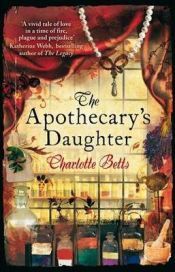
This debut romantic novel set in Restoration London, a glorious city about to be invaded by the plague, stars Susannah Leyton, daughter of a Fleet Street apothecary. A surprising marriage proposal rescues her from an unpleasant family situation but causes other problems. Piatkus (UK), August.
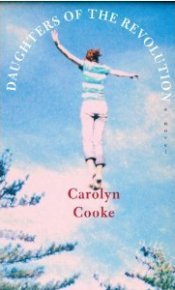
Does 1968 count as historical for you? I wasn't around then, so it does for me. This debut novel by a prizewinning short story writer takes place at a New England prep school which, through a clerical mistake, enrolls its first female student - a brilliant black teenager. Knopf, June.
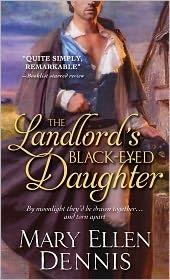
The title of Dennis's 18th-century romantic adventure derives from Alfred Noyes's poem "The Highwayman," and the plot retells the story in epic fashion. The heroine, Elizabeth "Bess" Wyndham, is a writer of Gothic novels who meets a man remarkably like one of her books' characters. First pb release of a novel previously published for the library market. Sourcebooks, August.
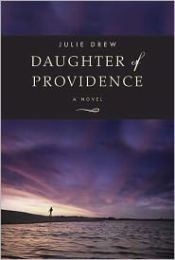
This debut novel by a Midwestern academic takes me back to my old stomping grounds of southern New England. In Warwick, Rhode Island, in the summer of 1934, Anne Dodge comes face to face with her Portuguese heritage and the truth about her parents' marriage. Overlook, July.
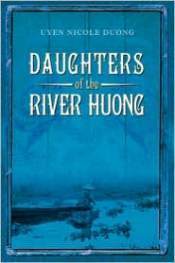
This lengthy saga is the product of AmazonEncore, a bookseller imprint specializing in identifying highly-rated self-published works and reissuing them for a wider market. It spans four generations of Vietnamese women - a royal concubine and her descendants - throughout the 20th century. A copy arrived in my mail last week. AmazonEncore, April.

Fiorato writes lyrical historical fiction about strong women from Italian history. Her latest takes place (per the title) in Siena in the early 18th century, at the time of the Palio - the city's famous horse race. Can I just say I want this gown for myself (the color is perfect) and the book itself is gorgeous - it's on my pile to review. St. Martin's Griffin, May.
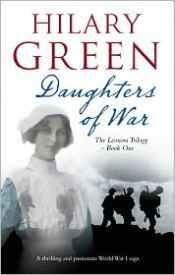
Green's Daughters of War is first in a new trilogy about nurses during WWI; in the Balkans, two young women render aid on the battlefield and discover unexpected romance. Severn House, August.
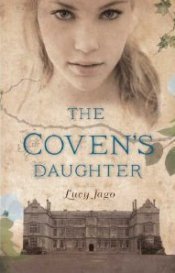
From the title, you'll have guessed this YA historical novel centers around witches. In 16th-century Somerset, a servant girl at Montacute House is accused of witchcraft following the disappearance of several boys from her village. Hyperion, April.
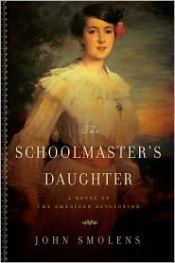
The story of Abigail Lovell, a young woman in Revolutionary-era Boston, who goes to great lengths (even defying her Loyalist father) to aid the American rebellion. The blurb compares it to Sally Gunning's Bound, which is enough to get me to pay attention. Pegasus, September.
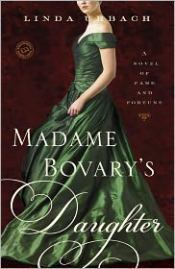
The girl in the green dress is Bertha, orphaned daughter of Emma Bovary, who leaves her grandmother's farm in the French countryside to make a new life for herself in high-society Paris, as the apprentice to fashion designer Charles Frederick Worth. Bantam, August.

This debut romantic novel set in Restoration London, a glorious city about to be invaded by the plague, stars Susannah Leyton, daughter of a Fleet Street apothecary. A surprising marriage proposal rescues her from an unpleasant family situation but causes other problems. Piatkus (UK), August.

Does 1968 count as historical for you? I wasn't around then, so it does for me. This debut novel by a prizewinning short story writer takes place at a New England prep school which, through a clerical mistake, enrolls its first female student - a brilliant black teenager. Knopf, June.

The title of Dennis's 18th-century romantic adventure derives from Alfred Noyes's poem "The Highwayman," and the plot retells the story in epic fashion. The heroine, Elizabeth "Bess" Wyndham, is a writer of Gothic novels who meets a man remarkably like one of her books' characters. First pb release of a novel previously published for the library market. Sourcebooks, August.

This debut novel by a Midwestern academic takes me back to my old stomping grounds of southern New England. In Warwick, Rhode Island, in the summer of 1934, Anne Dodge comes face to face with her Portuguese heritage and the truth about her parents' marriage. Overlook, July.

This lengthy saga is the product of AmazonEncore, a bookseller imprint specializing in identifying highly-rated self-published works and reissuing them for a wider market. It spans four generations of Vietnamese women - a royal concubine and her descendants - throughout the 20th century. A copy arrived in my mail last week. AmazonEncore, April.

Fiorato writes lyrical historical fiction about strong women from Italian history. Her latest takes place (per the title) in Siena in the early 18th century, at the time of the Palio - the city's famous horse race. Can I just say I want this gown for myself (the color is perfect) and the book itself is gorgeous - it's on my pile to review. St. Martin's Griffin, May.

Green's Daughters of War is first in a new trilogy about nurses during WWI; in the Balkans, two young women render aid on the battlefield and discover unexpected romance. Severn House, August.

From the title, you'll have guessed this YA historical novel centers around witches. In 16th-century Somerset, a servant girl at Montacute House is accused of witchcraft following the disappearance of several boys from her village. Hyperion, April.

The story of Abigail Lovell, a young woman in Revolutionary-era Boston, who goes to great lengths (even defying her Loyalist father) to aid the American rebellion. The blurb compares it to Sally Gunning's Bound, which is enough to get me to pay attention. Pegasus, September.

The girl in the green dress is Bertha, orphaned daughter of Emma Bovary, who leaves her grandmother's farm in the French countryside to make a new life for herself in high-society Paris, as the apprentice to fashion designer Charles Frederick Worth. Bantam, August.
Published on April 28, 2011 06:00
April 23, 2011
Book review: The Bride's House, by Sandra Dallas
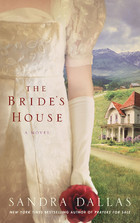 Sandra Dallas is a bestselling novelist whose works, puzzlingly, always seemed to have greater appeal to mainstream readers than to fans of her chosen genre of historical fiction. When I saw her latest novel come up for review on LibraryThing, I figured it was time I picked up one of her books and learned what I'd been missing.
Sandra Dallas is a bestselling novelist whose works, puzzlingly, always seemed to have greater appeal to mainstream readers than to fans of her chosen genre of historical fiction. When I saw her latest novel come up for review on LibraryThing, I figured it was time I picked up one of her books and learned what I'd been missing.A sweeping novel of family ties, long-held secrets, and the continuing search for love, The Bride's House tells of three women linked by blood, circumstance, and the large white Victorian house in Georgetown, Colorado, that becomes home for each in turn. Though very different personality-wise, all are plain-spoken, tenacious, and eager to please, and all struggle to find happiness.
For Nealie Bent, a 17-year-old runaway whose striking looks and vibrant personality attract the eye of local miners, the newly built residence symbolizes her desire to rise above her status as a hired girl at a Georgetown boardinghouse in 1880. She has her choice of men, preferring sophisticated engineer Will Spaulding over uncouth yet reliable Charlie Dumas (and who wouldn't, at seventeen?). Her choice, combined with Will's subsequent betrayal of her, is the novel's most predictable aspect.
Pearl, a shy and plain spinster of 30 in the year 1912, is adored by her wealthy father, who relies on her so heavily that he chases away potential suitors. Her decision to pursue a romance with a handsome businessman sets father and daughter against one another and transforms her life – not necessarily for the better.
And for 18-year-old Susan, an heiress growing up in 1950s-era Chicago, the Bride's House brings back memories of childhood summers in the mountains, a time of intense peer pressure and her growing love for a neighborhood boy with big dreams. Outside politics don't play a strong role except in this section, which is set against the backdrop of the Korean War.
While the characters are recognizable types, and sometimes behave in frustrating ways – the devoted family housekeeper despairs of Pearl's excessive timidity, too – they still have many surprises in store. The flowing style drew me in, and the emotional shifts in the plot had a way of raising my spirits then filling them with sorrow moments later.
The women's choices are driven not just by their temperament but also by their social and financial situations and the prevailing mores of the time. "Georgetown doesn't seem like a place where conventions matter much," Will tells Nealie early on, but that's never exactly true. Over the next 70 years, as rough-and-tumble shacks give way to elegant homes, the demand for silver rises and falls, and mining towns become ghost towns and then tourist attractions, attitudes loosen in some ways but not others.
As Dallas reveals in the acknowledgments, the novel's centerpiece is based on a house that the she and her husband bought as a derelict and restored to its former glory. Her affection for it and for the region as a whole is ever-present; Georgetown, with its distinctive mountain charm, is not just a haven for fortune-seekers but also for dreamers and anyone looking to start anew.
With all three strands woven together, The Bride's House became a more complex story than I expected from such a straightforward telling. A comfortable novel about women's lives, it will resonate strongly with female readers, who will take away from it the pervading theme of how we're all shaped by our circumstances but shouldn't be defined by them.
The Bride's House will be published by St. Martin's Press on April 26th (this coming Tuesday) in hardcover at $24.99/$28.99 in Canada (352pp).
Published on April 23, 2011 13:24
April 15, 2011
Book review: The Bonus, by Georgia Lowe
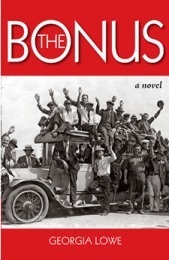 Georgia Lowe's debut novel The Bonus shines light on a pivotal and regrettably obscure event from the Depression era. In 1932, over 20,000 destitute and desperate WWI veterans banded together to persuade the government to pay their wartime service bonuses early. Calling themselves the Bonus Expeditionary Force, they arrived from all over the U.S. to converge on the nation's capital and sway public opinion in their favor.
Georgia Lowe's debut novel The Bonus shines light on a pivotal and regrettably obscure event from the Depression era. In 1932, over 20,000 destitute and desperate WWI veterans banded together to persuade the government to pay their wartime service bonuses early. Calling themselves the Bonus Expeditionary Force, they arrived from all over the U.S. to converge on the nation's capital and sway public opinion in their favor.Lowe incorporates multiple viewpoints, primarily that of Will Hardy, a reporter assigned to cover the story for the Los Angeles Herald Express, and his girlfriend Bonnie, a statuesque red-headed starlet. Because the LA-based contingent to Washington is led by disabled actor Royal Robertson, Will wonders if their cause is a publicity stunt, but he's soon persuaded of the rightness of their journey – even though going along with them as a journalist makes him uneasy. A veteran hit with occasional shell-shock, Will doesn't want any reminders of his army days. Bonnie returns to her career after Will leaves, but she misses him terribly, even though she's confused about his feelings for her. Disillusioned with Hollywood, and eager to help her friend Myrna leave a bad situation, the women set out to find him - and find help along the way.
DC police superintendent Pelham Glassford gets his tale told, too. Based on past experience, he expects President Hoover to be sympathetic to the marchers, but he isn't. As thousands of hungry, determined, and unkempt veterans and their families settle into Washington, a "ragtag army invasion from a forgotten war," Glassford does what he can to ensure they're given shelter and fed, though the feds aren't on his side. The Senate rejects the Bonus Bill passed by the House, rumors are spread about the veterans' Communist beliefs (mostly untrue), and Hoover calls in the army – under General MacArthur – to clear out their makeshift campsites. It's not a pretty scene.
Not just a vivid portrait of the unrest stirring in Washington, The Bonus also invites readers to take a firsthand look at the hopeless conditions throughout Depression-era America. Lowe re-creates the era with a sure hand: the blistering heat as the caravan of dying vehicles passes through Arizona in June, farm families evicted from their land in Dust Bowl Oklahoma, and veterans living in railway boxcars since they have nowhere else to go.
The dialogue is pulpy and casual, peppered with coarse and authentic slang. (Newspapers are "Hoover blankets," for one, which pretty well shows what people thought of Hoover.) As the plot breezes along, readers get to absorb the plight of female vets and Americans of mixed race through the clever placement of minor characters. A sweet love story, a wrenching social drama, and a vigorous defense of First Amendment rights, The Bonus is especially good at showing the strong bonds that develop between people when their luck is down. These downtrodden citizens epitomize the spirit of America better than their elected government does.
Toward the end, the main plotline sometimes gets buried in the mechanics of the political machine Glassford has to push through. Overall, however, Lowe successfully transforms scenes from faded black and white photographs into living, breathing color. Will and Bonnie are based on her parents, who were Bonus Marchers, and with her entertaining and enlightening novel, she has done justice to their story.
The Bonus was published by Lucky Dime Press in Oct 2010 at $18.95 (pb, 398pp).
Published on April 15, 2011 16:20
April 11, 2011
International book pile
I'm taking a break from the controlled chaos known as National Library Week to finish writing up a post I've had in draft since mid-March (ack).
Over the last little while, I've had some book purchases arrive at my door, and I hope to showcase more of these in upcoming posts. The historical novels in the pile below come from around the world, five of them via English translations. I didn't have to travel far to get them, though; all were bought from Amazon US with the exception of the Haasse and Falcones, which came from Book Depository.
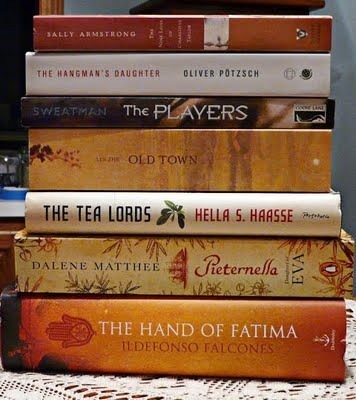
Sally Armstrong's The Nine Lives of Charlotte Taylor (Vintage Canada, 2008) is historically-based fiction written by the title character's 3x-great granddaughter. Armstrong imagines her ancestor's life, tracing her journey from 1775 England to the West Indies to northern New Brunswick, where she takes refuge with the Mi'kmaq. The cover says "national bestseller," so Canadian readers will likely know it already, though I just discovered it recently.
I finished Oliver Pötzsch's The Hangman's Daughter (AmazonCrossing, 2010) two days ago. Who'd have thought a 400-page historical mystery set in a small town in 17th-c Bavaria would be a bestseller in America? It's published by AmazonCrossing, Amazon's new imprint for translated fiction, and I understand they've been advertising it to Kindle readers... so the word has spread quickly. It's proved so popular that Houghton Mifflin Harcourt has snapped up print rights to it and its three sequels, for publication beginning this August. In his tale of serial murder and supposed witchcraft in 1659 Schongau, the author keeps a steady balance between the setting's grim reality and the warm-hearted humanity of his main characters. First published in Germany in 2008.
Margaret Sweatman's The Players (Goose Lane, 2009) is another Canadian find, "a voyage of discovery straddling libertine Restoration England and Canada's northern wilds" that follows actress Lilly Cole from the English stage across the Atlantic. The 17th-century is one of my favorite periods to read about, and this looked like a new perspective on the era.
We're moving into doorstop territory now. Lin Zhe's Old Town (AmazonCrossing, 2010) is another book from the online bookseller's translation imprint. To select titles for its catalog, Amazon looks at bestselling titles from its international stores and, based on their contents and ratings, decides which are likely to succeed as English translations. Lin Zhe is described as "one of China's foremost authors," and this is her saga covering a century of change in that country over three generations. I love long novels with family trees, and based on the two printed in the first few pages, Old Town looks to have a lot of personality. There's an "Eldest Sister" who marries a guy named "Rotten Egg" Zhang, and under the name of "Second Son," there's a note that says "ran off with prostitute." I look forward to reading their stories.
It's been over ten years since I've had the pleasure of reading one of Hella Haasse's novels; unfortunately I'm not fluent in Dutch. Her In a Dark Wood Wandering, set in 15th-c France, is a favorite, though I admit I never got on well with her Threshold of Fire (5th-c Rome). The Tea Lords (Portobello, 2010) is set amidst the Dutch colonial experience in the East Indies in the early years of the 20th century. First published in Dutch in 1992. That's a very long time to wait for a translation, though at least we got one.
Dalene Matthee was a well-known South African writer, and her Pieternella, Daughter of Eva (Penguin South Africa, 2008) tells the story of the first white settlement in the Cape of Good Hope. Pieternella was a mixed-race child, the daughter of a Dutch surgeon and a woman of the Hottentot tribe, and Matthee's novel is based on a true story. See the author's website for more. This is a translation from Afrikaans.
The nearly 900-page The Hand of Fatima (Doubleday UK, 2011) is Spanish writer Ildefonso Falcones's latest novel, following his bestseller Cathedral of the Sea. I'm probably crazy buying a novel this long, given my growing TBR pile, but I couldn't resist a novel set in the Kingdom of Granada in 1564, about the extended conflict between the Moors and Christians. I had this on preorder from Book Depository for nearly a year, and it finally arrived last week.
Sorry if you're seeing a duplicate post in your RSS reader. This posted once before I was done writing!
Over the last little while, I've had some book purchases arrive at my door, and I hope to showcase more of these in upcoming posts. The historical novels in the pile below come from around the world, five of them via English translations. I didn't have to travel far to get them, though; all were bought from Amazon US with the exception of the Haasse and Falcones, which came from Book Depository.

Sally Armstrong's The Nine Lives of Charlotte Taylor (Vintage Canada, 2008) is historically-based fiction written by the title character's 3x-great granddaughter. Armstrong imagines her ancestor's life, tracing her journey from 1775 England to the West Indies to northern New Brunswick, where she takes refuge with the Mi'kmaq. The cover says "national bestseller," so Canadian readers will likely know it already, though I just discovered it recently.
I finished Oliver Pötzsch's The Hangman's Daughter (AmazonCrossing, 2010) two days ago. Who'd have thought a 400-page historical mystery set in a small town in 17th-c Bavaria would be a bestseller in America? It's published by AmazonCrossing, Amazon's new imprint for translated fiction, and I understand they've been advertising it to Kindle readers... so the word has spread quickly. It's proved so popular that Houghton Mifflin Harcourt has snapped up print rights to it and its three sequels, for publication beginning this August. In his tale of serial murder and supposed witchcraft in 1659 Schongau, the author keeps a steady balance between the setting's grim reality and the warm-hearted humanity of his main characters. First published in Germany in 2008.
Margaret Sweatman's The Players (Goose Lane, 2009) is another Canadian find, "a voyage of discovery straddling libertine Restoration England and Canada's northern wilds" that follows actress Lilly Cole from the English stage across the Atlantic. The 17th-century is one of my favorite periods to read about, and this looked like a new perspective on the era.
We're moving into doorstop territory now. Lin Zhe's Old Town (AmazonCrossing, 2010) is another book from the online bookseller's translation imprint. To select titles for its catalog, Amazon looks at bestselling titles from its international stores and, based on their contents and ratings, decides which are likely to succeed as English translations. Lin Zhe is described as "one of China's foremost authors," and this is her saga covering a century of change in that country over three generations. I love long novels with family trees, and based on the two printed in the first few pages, Old Town looks to have a lot of personality. There's an "Eldest Sister" who marries a guy named "Rotten Egg" Zhang, and under the name of "Second Son," there's a note that says "ran off with prostitute." I look forward to reading their stories.
It's been over ten years since I've had the pleasure of reading one of Hella Haasse's novels; unfortunately I'm not fluent in Dutch. Her In a Dark Wood Wandering, set in 15th-c France, is a favorite, though I admit I never got on well with her Threshold of Fire (5th-c Rome). The Tea Lords (Portobello, 2010) is set amidst the Dutch colonial experience in the East Indies in the early years of the 20th century. First published in Dutch in 1992. That's a very long time to wait for a translation, though at least we got one.
Dalene Matthee was a well-known South African writer, and her Pieternella, Daughter of Eva (Penguin South Africa, 2008) tells the story of the first white settlement in the Cape of Good Hope. Pieternella was a mixed-race child, the daughter of a Dutch surgeon and a woman of the Hottentot tribe, and Matthee's novel is based on a true story. See the author's website for more. This is a translation from Afrikaans.
The nearly 900-page The Hand of Fatima (Doubleday UK, 2011) is Spanish writer Ildefonso Falcones's latest novel, following his bestseller Cathedral of the Sea. I'm probably crazy buying a novel this long, given my growing TBR pile, but I couldn't resist a novel set in the Kingdom of Granada in 1564, about the extended conflict between the Moors and Christians. I had this on preorder from Book Depository for nearly a year, and it finally arrived last week.
Sorry if you're seeing a duplicate post in your RSS reader. This posted once before I was done writing!
Published on April 11, 2011 17:55
April 10, 2011
Beloved Dead giveaway winner
I have a longer post in the works, but without further delay, it's time to announce the winner of the latest giveaway.
Congratulations to Heather, winner of Tony Hays's The Beloved Dead and the two previous books in the series. Happy reading -- I hope you'll enjoy them!
Congratulations to Heather, winner of Tony Hays's The Beloved Dead and the two previous books in the series. Happy reading -- I hope you'll enjoy them!
Published on April 10, 2011 09:32
April 4, 2011
Book review: The Confession of Katherine Howard, by Suzannah Dunn
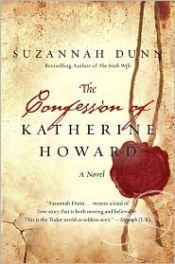 Suzannah Dunn's The Confession of Katherine Howard, a swift-moving story of friends-turned-frenemies in Tudor England, looks at Henry VIII's fifth wife from the viewpoint of her companion and lady-in-waiting, Cat Tilney.
Suzannah Dunn's The Confession of Katherine Howard, a swift-moving story of friends-turned-frenemies in Tudor England, looks at Henry VIII's fifth wife from the viewpoint of her companion and lady-in-waiting, Cat Tilney.The story of Katherine's downfall is widely known. There are a few reasons to consider reading a novel with a familiar plotline: if it offers intriguing characterizations, presents a fresh perspective, or is written in a way that strikes an authentic note. Dunn accomplishes two out of the three, resulting in a lively and rich tale that still ends up feeling hollow.
Framed by Cat's account of how Katherine's indiscretions are discovered, in November 1541, the bulk of the novel looks back on their shared adolescence. Fittingly for Katherine's personality, it's divided into three sections – each corresponding to one of her sexual conquests. These are Henry Madox, her music teacher; Francis Dereham, a family friend who becomes her first real lover; and Thomas Culpeper, a handsome, snobbish nobleman.
With her breezy style, Dunn captures the lax atmosphere of their years spent in the household of Agnes Howard, Dowager Duchess of Norfolk, a rich distant relative of Cat's, and the step-grandmother of Katherine (or Kate, as she's called). Kate is a mature girl of twelve whose worldly attitude is assumed, but it makes her the unofficial leader of their little group. At Horsham in Sussex, they live in giddy isolation and ignorance, spending their days gossiping rather than in book learning, and forming liaisons with attractive men.
Eventually they're relocated to Lambeth Palace, across the river from the king's residence at Whitehall – the perfect launch point for the ambitious Howards, who are eager to return to power following the disgrace of their late niece, Anne Boleyn. Kate is quick to dump Francis after her family secures a place for her as one of Anne of Cleves's ladies, whereupon Cat takes up with him herself. (Their relationship is fictional.)
Cat's narration is casual and modern, full of would've and should've and d'you think?, much as you'd find in a contemporary YA novel. It suits these characters well. Gorgeous as they are, the lush descriptions in the first few pages – "England: firelight and fireblush; wine-dark, winking gemstones and a frost of pearls… satins glossy like a midsummer midnight or opalescent like winter sunrise" – feel out of place in contrast.
Kate, for all her claims to wisdom, is rather dim, convinced that the king's infatuation with her will continue – even going so far as to sleep with Culpeper (with bed-thumping intensity) in her rooms at the palace. Cat, for her part, keeps insisting that "Little Kate Howard" was "just a girl" and "nobody much"… a typical nineteen-year-old who was doing a "perfect job" as queen until she was unlucky enough to get caught. The reader knows better. Kate, after all, is someone who describes the king as "good fun" after their first meeting, even knowing he had her cousin executed. And when tensions run high, Cat and Kate look to save themselves and their lovers rather than each other… such is what passes for friendship in the ruthless Tudor era, it seems.
Nobody comes out a winner here, except perhaps master manipulator Archbishop Cranmer – something everyone knows from the beginning. The problem is that the girls' naiveté makes them more pitiable than sympathetic, and Kate's bitchiness – which could have livened up the action – is seen only from the sidelines. It's plenty entertaining, and as a portrait of the times, it feels depressingly realistic, but don't look for characters to admire or care about. As a result, rather than a heartrending tragedy about a wronged woman, the novel reads like a sad account of the inevitable.
The Confession of Katherine Howard is published April 5th by Harper Paperbacks at $14.99 (307pp). It was previously published by HarperCollins UK.
Published on April 04, 2011 16:00
April 2, 2011
Historical fiction award news
A few historical fiction award winners and nominees have been announced in recent days.
 Lucia St. Clair Robson's Last Train from Cuernavaca (Forge, 2010) is the winner of the 2010 Spur Award for Best Western Long Novel. Last Train tells the story of two women, one Mexican and one English, caught up in the Mexican Revolution of 1910-20.
Lucia St. Clair Robson's Last Train from Cuernavaca (Forge, 2010) is the winner of the 2010 Spur Award for Best Western Long Novel. Last Train tells the story of two women, one Mexican and one English, caught up in the Mexican Revolution of 1910-20.
For Best Western Short Novel, the winner was Richard S. Wheeler's Snowbound (Forge, 2010), biographical fiction about John Charles Frémont and his fourth expedition, when he was trapped in the Colorado mountains during the winter of 1848-49.
The Spurs are awarded for excellence in Western writing by Western Writers of America. See their site for more information as well as the finalists.
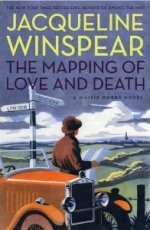 The winner of the Bruce Alexander Memorial Historical Mystery award was announced last week at the Left Coast Crime convention. Kudos to Jacqueline Winspear, who took home the prize with her seventh Maisie Dobbs mystery, The Mapping of Love and Death (Harper, 2010). This award is given to the best historical mystery novel (pre-1950 setting).
The winner of the Bruce Alexander Memorial Historical Mystery award was announced last week at the Left Coast Crime convention. Kudos to Jacqueline Winspear, who took home the prize with her seventh Maisie Dobbs mystery, The Mapping of Love and Death (Harper, 2010). This award is given to the best historical mystery novel (pre-1950 setting).
Finally, the shortlist for the 2nd Walter Scott Prize for Historical Fiction was announced yesterday:
Andrea Levy, The Long Song (Headline Review and FSG)
Tom McCarthy, C (Jonathan Cape and Knopf)
David Mitchell, The Thousand Autumns of Jacob de Zoet (Sceptre and Random House)
Joseph O'Connor, Ghost Light (Harvill Secker and FSG)
C J Sansom, Heartstone (Mantle and Viking)
Andrew Williams, To Kill a Tsar (John Murray - no US publisher).
More details at The Bookseller. The winner will be announced on June 18th, as part of the Borders Book Festival in Melrose, Scotland. (Melrose is a town in the Scottish Borders; the festival has nothing to do with the ill-fated bookseller.)
 Lucia St. Clair Robson's Last Train from Cuernavaca (Forge, 2010) is the winner of the 2010 Spur Award for Best Western Long Novel. Last Train tells the story of two women, one Mexican and one English, caught up in the Mexican Revolution of 1910-20.
Lucia St. Clair Robson's Last Train from Cuernavaca (Forge, 2010) is the winner of the 2010 Spur Award for Best Western Long Novel. Last Train tells the story of two women, one Mexican and one English, caught up in the Mexican Revolution of 1910-20.For Best Western Short Novel, the winner was Richard S. Wheeler's Snowbound (Forge, 2010), biographical fiction about John Charles Frémont and his fourth expedition, when he was trapped in the Colorado mountains during the winter of 1848-49.
The Spurs are awarded for excellence in Western writing by Western Writers of America. See their site for more information as well as the finalists.
 The winner of the Bruce Alexander Memorial Historical Mystery award was announced last week at the Left Coast Crime convention. Kudos to Jacqueline Winspear, who took home the prize with her seventh Maisie Dobbs mystery, The Mapping of Love and Death (Harper, 2010). This award is given to the best historical mystery novel (pre-1950 setting).
The winner of the Bruce Alexander Memorial Historical Mystery award was announced last week at the Left Coast Crime convention. Kudos to Jacqueline Winspear, who took home the prize with her seventh Maisie Dobbs mystery, The Mapping of Love and Death (Harper, 2010). This award is given to the best historical mystery novel (pre-1950 setting).Finally, the shortlist for the 2nd Walter Scott Prize for Historical Fiction was announced yesterday:
Andrea Levy, The Long Song (Headline Review and FSG)
Tom McCarthy, C (Jonathan Cape and Knopf)
David Mitchell, The Thousand Autumns of Jacob de Zoet (Sceptre and Random House)
Joseph O'Connor, Ghost Light (Harvill Secker and FSG)
C J Sansom, Heartstone (Mantle and Viking)
Andrew Williams, To Kill a Tsar (John Murray - no US publisher).
More details at The Bookseller. The winner will be announced on June 18th, as part of the Borders Book Festival in Melrose, Scotland. (Melrose is a town in the Scottish Borders; the festival has nothing to do with the ill-fated bookseller.)
Published on April 02, 2011 08:35
March 30, 2011
Book review/giveaway: The Beloved Dead, by Tony Hays
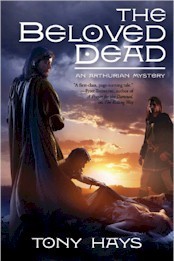 Tony Hays's third Arthurian mystery, set in a bleak 5th-century Britain, is the most gripping entry yet in an already strong series.
Tony Hays's third Arthurian mystery, set in a bleak 5th-century Britain, is the most gripping entry yet in an already strong series. Having lost one arm in battle, Malgwyn ap Cuneglas has reinvented himself as King Arthur's scribe and advisor. The Beloved Dead is set at a time he calls "a season of ill omens, among the worst of my long life." Malgwyn is an honorable man, loyal to the Rigotamos and his vision of a united kingdom, though he remains cynical about Arthur's Christian faith – and most everything else besides. He's also close to his cousin, Guinevere, the former nun whom Arthur loves but says he cannot marry.
And so Malgwyn chafes at two tasks he considers shameful and unwise: accompanying Arthur as he removes the head of Bran, an icon sacred to the Druids, from its burial spot near Londinium; and arranging a marriage between Arthur and Gwyneira, the teenage daughter of a Christian nobleman with whom Arthur wants an alliance.
The roads Malgwyn is asked to follow are marked by peril and death. Along both of his journeys, young women are found killed, brutalized in a horrific manner. The motive is puzzling – the girls and their families had no enemies – which makes Malgwyn ponder a possible conspiracy to shake up Arthur's reign. Or has Arthur tempted fate by stealing a Druid relic? Remembering his own wife's death at the hands of the Saxons, Malgwyn is affected by the killings; he grieves for the innocent lives lost and wishes he had time to investigate. His assignment of bringing Gwyneira south to marry Arthur forces him to set his feelings aside.
Fans of Arthurian legend will appreciate how Hays reinterprets oft-told stories from the canon and deftly works them into a mystery plotline. There is a large cast of characters, some familiar and some new, who have discrete and memorable personalities. Women play a greater role here than in books one and two. Guinevere is a standout heroine; courageous even in the face of abandonment and danger, she deserves a place as Arthur's consort. Succinct recaps of events from The Killing Way and The Divine Sacrifice are included, but because of possible spoilers, anyone intent on reading those novels should do so first.
Although Latin is rarely spoken, and the Romans themselves are long gone, Arthur's plan for consolidating and governing his realm has a decidedly Roman bent to it. Fifth-century Britain is depicted as a land in transition, with Christian, Roman, and pagan influences both warring and intermingling. The dark uncertainty of the atmosphere adds to the growing tension.
By book three, Malgwyn has started to settle down. He's cut out the drinking (mostly), has found a good woman (his brother's widow, Ygerne), and has formed a strong relationship with his daughter. In fact, he has become a seasoned diplomat – he'd probably hate that description – and worries that he's lost his edge. He hasn't. In fact, his sensitivity to the political and emotional minefields around him makes him a force to be reckoned with. Though determined to serve justice even when it pains him, he's not immune to stress. He's also amusingly baffled when it comes to women. Female readers in particular will discern the reasons for Ygerne's anger long before he does.
As Malgwyn proceeds with fierce resolve along the path to finding a serial killer, he remains true to himself, yet his crime-solving abilities cleverly defy readers' expectations. Most importantly, he knows that each successive murder is more than a plot twist or opportunity to prove himself – rather, each is a tragedy that should have been prevented. So while the aptly-titled The Beloved Dead has an optimistic and satisfying ending, as all good mysteries do, it would be hard to call it a truly happy one.
---
The Beloved Dead was published on March 29th by Forge at $25.99 in hardcover ($29.99 in Canada, £18.99 UK). See my earlier interview with Tony Hays for details on the first two books, The Killing Way and The Divine Sacrifice, as well as background on the writing process. See also the author's website at www.tonyhays.com.
Interested in a copy of The Beloved Dead? Or how about all three in the series? Thanks to Forge, we have a giveaway opportunity... to win the three-book set, please leave a comment on this post. Deadline for entry is April 8th.
Published on March 30, 2011 05:00
March 28, 2011
Contest winner, and a note on longevity
Things have been quiet here this past week: I've been getting over a cold (one that lasted close to three months and is finally almost gone); I've been taking care of another stray kitten that's somehow worked her way into our house; and I've had so many other deadlines that I haven't felt much like posting.
But without further delay, the winner of Chelsea Quinn Yarbro's An Embarrassment of Riches is Ashley. Congratulations - I'll be in touch via email, and I hope you'll enjoy the book!
(There were two anonymous entries, which I was unable to count, for obvious reasons... but I appreciate your stopping by!)
Also, on another personal note, last Friday was my 5th blogiversary. Originally I had plans to do a bigger celebration for it, maybe a contest or something, but then Real Life got in the way. So I'll simply say thanks to all of you for reading my site, commenting, linking, even lurking. Getting to set down my thoughts about books and having people read and react to what I write - what blogger could ask for more than that?
But without further delay, the winner of Chelsea Quinn Yarbro's An Embarrassment of Riches is Ashley. Congratulations - I'll be in touch via email, and I hope you'll enjoy the book!
(There were two anonymous entries, which I was unable to count, for obvious reasons... but I appreciate your stopping by!)
Also, on another personal note, last Friday was my 5th blogiversary. Originally I had plans to do a bigger celebration for it, maybe a contest or something, but then Real Life got in the way. So I'll simply say thanks to all of you for reading my site, commenting, linking, even lurking. Getting to set down my thoughts about books and having people read and react to what I write - what blogger could ask for more than that?
Published on March 28, 2011 19:59
March 21, 2011
Bestselling historical novels of 2010
Publishers Weekly has just come out with its list of the hottest selling novels in the US from the previous year, so it's time to look at which historical novels made the cut. This is my 4th annual post on the subject (see writeups from 2009, 2008, and 2007), and per my blog stats, these posts are pretty popular. Everyone wants to know what a bestselling historical novel looks like, or maybe is wondering if such a thing exists.
PW's original list is here - from their annual Facts & Figures coverage - and all I'm doing is summarizing and commenting on the historical novels on it. I'd recommend visiting the original article by Daisy Maryles for the comprehensive stats as well as info on changing trends.
Earlier this year, PW asked publishers to submit sales figures on titles that sold more than 100,000 copies during 2010. Only print sales of new books counted -- those shipped and billed. Returns were supposedly taken into account.
Among the top 15 hardcover fiction bestsellers we have:
#3 - Kathryn Stockett, The Help (1,317,397 copies)
#12 - Ken Follett, Fall of Giants (621,562 copies)
It's notable that The Help was #3 on last year's chart as well, with 1,104,617 copies sold in '09. I still own a copy and still haven't read it! Blame the publishers/authors/editors/bloggers who keep urging new books on me. The rest of the top 15 is dominated by Stieg Larsson, a predictable crop of thrillers (Grisham, Patricia Cornwell, James Patterson and his coauthors), plus Nicholas Sparks, a couple of mysteries, and Franzen's Freedom.
Others that sold more than 100,000 copies, in descending order of sales:
Seth Grahame-Smith, Abraham Lincoln: Vampire Hunter (ok, I'm not sure if this really counts as a historical novel, but with eye-opening sales of 230K+, it's worth mentioning)
Danielle Steel, Legacy
Karl Marlantes, Matterhorn: A Novel of the Vietnam War
Francine Rivers, Her Mother's Hope
Philippa Gregory, The Red Queen
Francine Rivers, Her Daughter's Dream (sequel to Her Mother's Hope)
Elizabeth Kostova, The Swan Thieves
Francine Rivers, Redeeming Love (reprint of a classic)
David Mitchell, The Thousand Autumns of Jacob de Zoet
Catherine Coulter, The Valcourt Heiress
Newt Gingrich and William R. Fortschen, Valley Forge
Sarah Blake, The Postmistress
...And that's it. This isn't to say that there aren't other definitions of "bestseller" we could use, but when you look at sales of this magnitude, this is what we have. The two debut novels on the list are the Stockett and Marlantes. With the exception of the Sarah Blake, the remainder are subsequent novels by authors whose previous books were bestsellers. I've read Fall of Giants, Red Queen, and Thousand Autumns and enjoyed all three, especially the first and last. Which ones have you read?
On
PW's original list is here - from their annual Facts & Figures coverage - and all I'm doing is summarizing and commenting on the historical novels on it. I'd recommend visiting the original article by Daisy Maryles for the comprehensive stats as well as info on changing trends.
Earlier this year, PW asked publishers to submit sales figures on titles that sold more than 100,000 copies during 2010. Only print sales of new books counted -- those shipped and billed. Returns were supposedly taken into account.
Among the top 15 hardcover fiction bestsellers we have:
#3 - Kathryn Stockett, The Help (1,317,397 copies)
#12 - Ken Follett, Fall of Giants (621,562 copies)
It's notable that The Help was #3 on last year's chart as well, with 1,104,617 copies sold in '09. I still own a copy and still haven't read it! Blame the publishers/authors/editors/bloggers who keep urging new books on me. The rest of the top 15 is dominated by Stieg Larsson, a predictable crop of thrillers (Grisham, Patricia Cornwell, James Patterson and his coauthors), plus Nicholas Sparks, a couple of mysteries, and Franzen's Freedom.
Others that sold more than 100,000 copies, in descending order of sales:
Seth Grahame-Smith, Abraham Lincoln: Vampire Hunter (ok, I'm not sure if this really counts as a historical novel, but with eye-opening sales of 230K+, it's worth mentioning)
Danielle Steel, Legacy
Karl Marlantes, Matterhorn: A Novel of the Vietnam War
Francine Rivers, Her Mother's Hope
Philippa Gregory, The Red Queen
Francine Rivers, Her Daughter's Dream (sequel to Her Mother's Hope)
Elizabeth Kostova, The Swan Thieves
Francine Rivers, Redeeming Love (reprint of a classic)
David Mitchell, The Thousand Autumns of Jacob de Zoet
Catherine Coulter, The Valcourt Heiress
Newt Gingrich and William R. Fortschen, Valley Forge
Sarah Blake, The Postmistress
...And that's it. This isn't to say that there aren't other definitions of "bestseller" we could use, but when you look at sales of this magnitude, this is what we have. The two debut novels on the list are the Stockett and Marlantes. With the exception of the Sarah Blake, the remainder are subsequent novels by authors whose previous books were bestsellers. I've read Fall of Giants, Red Queen, and Thousand Autumns and enjoyed all three, especially the first and last. Which ones have you read?
On
Published on March 21, 2011 20:22



